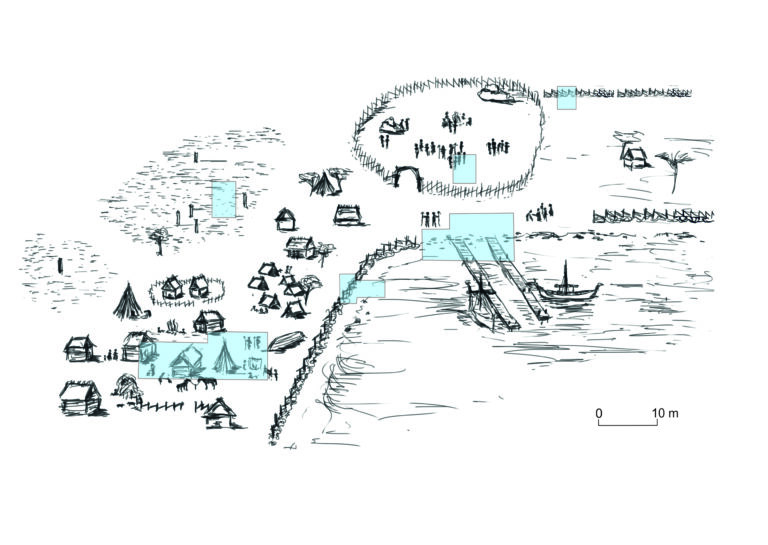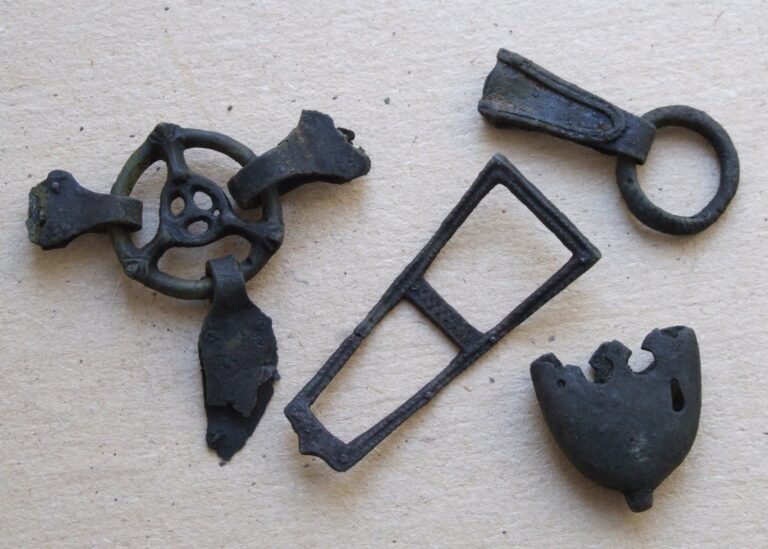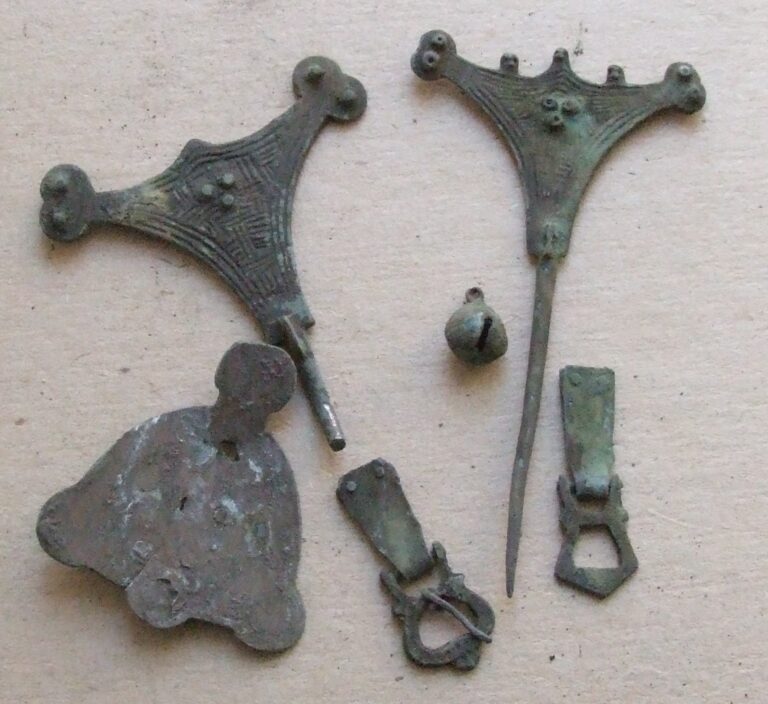
The Viltina stone grave in Southern Saaremaa was excavated in 1940 ahead of the planned construction work of a Soviet military base. As a result, the dig was hurried: over the period of just two months, an area slightly larger than 3200 m2 was uncovered (by Artur Vassar and Marta Schmiedehelm). The burial site consisted of a larger stone grave without a formal structure, and surrounding smaller cairns. Some of the latter remained unexamined due to time running out.
While in use (ca 980–1300 AD), the graves of Viltina were situated right on the coast next to a small bay, a suitable landing place for seagoing vessels. Rutiränk, the central stone grave with no formal structure, was composed of a high pile of boulders and may have functioned as a dominating landmark.

Cremations mostly formed patches under the stones of the grave, but occasionally the cremated remains were intermingled and scattered over a larger area. Under the covering layer of stones, at least eight stone circle graves were recorded. The finds were numerous, even though the research was carried out in a hurry and without sieving. Some of the jewellery was made of precious metals, and the number of weapons or their fragments retrieved was remarkable. Ornamented ceramics, including imported pottery, were plentiful. Over 100 people are estimated to have been buried in the grave mainly during the 11th and 12th centuries, seeing as 30–50 individual burials were identified during the excavations. Also unearthed were three inhumations from the 13th century.
Numerous boat rivets arranged in ovals were uncovered in the stone grave section closest to the sea, however, the area yielded next to no bones or artefacts. The rivets seem to indicate that discarded boats were brought to the stone grave, either during the period the burial site was in use, or somewhat later.


The abundance of finds, as well as the location of the Viltina stone grave a long distance from large arable fields both suggest that the burial place was mainly associated with the Viltina harbour and possible public gathering site barely 50–100 m away.


